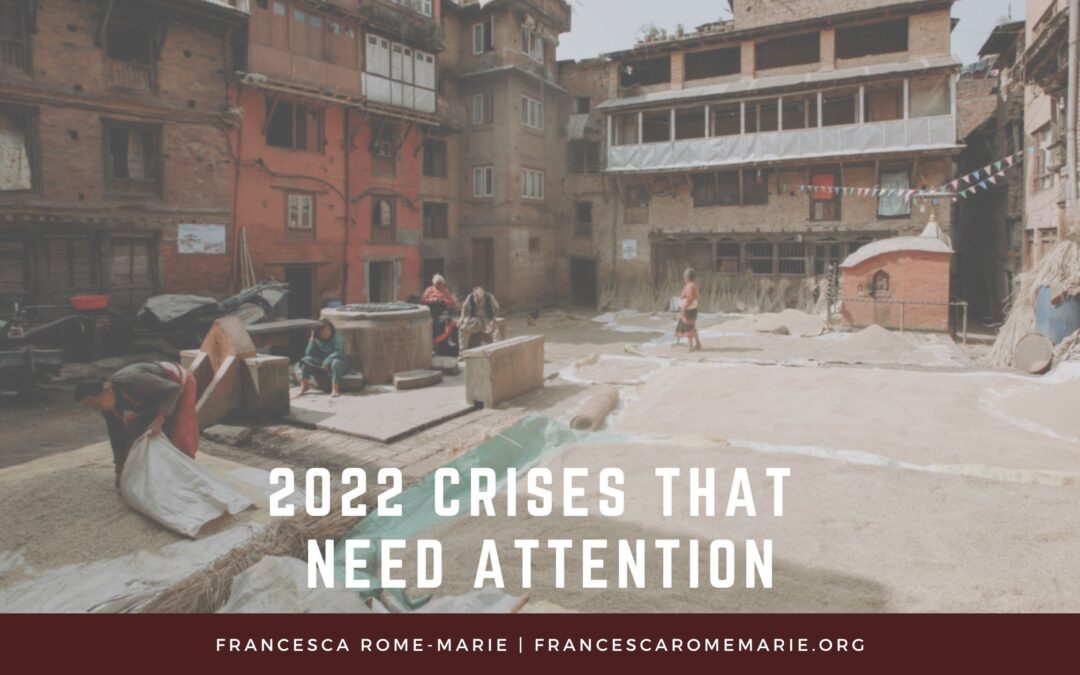The ICRC released its Emergency Watchlist for 2022 before the Russian invasion of Ukraine and the ensuing crisis. And it is worth remembering that going into this year twenty countries accounted for 89% of people in need of humanitarian aid, while having only 10% of the global population. Most countries on this list have experienced relentless conflict over the last decade. Accordingly, their ability to respond to new or growing crises and threats, such as climate change and pandemics, is significantly decreased.
Of those identified in the full report, ten crises were ranked as the world’s most critical.
10. Sudan
Skyrocketing inflation (388%), drought, flood, locusts, and threats to peace efforts are affecting the country of 44.9 million – with 14.3 million in need, 3 million internally displaced, and nearly 300 thousand effected by this year’s rainy season flooding.
9. Syria
Current levels of food insecurity and inflation are at the highest yet in over a decade of war. Water shortages and escalating conflict threaten regional, frontline, and displaced communities in a country where almost 65% of the population is identified as “in need.”
8. Somalia
On the Watchlist for the 9th consecutive year, Somalia is in the top 5 for internal displacement. As the country of 16.4 million face ongoing drought, acute food insecurity and disease are compounded by infrastructure and security impediments to aid.
7. Myanmar
Conflict following the February 2021 military coups continues. During the first 6 months of 2022 Myanmar reported the most incidents of violence by state forces against civilians of anywhere in the world. Thousands of people have been displaced and the economic impact of this situation is expected to push more people into poverty.
6. Democratic Republic of Congo
Conflict continues in the eastern region of the country. Tension surrounds the UN stabilization forces and over 100 armed groups, including the M23 Movement which some accuse neighboring Rwanda of supporting.
5. South Sudan
South Sudan marked its 10th anniversary of independence in 2021. While lower than during the height of violence in 2013-2014, conflict persists and the World Food Programme notes that food insecurity is the worst since independence. This is due to the combination of natural shocks and COVID-19.
4. Nigeria
Criminal and political violence have spread across Nigeria. With the population expected to double by 2050, climate shocks such as flooding are causing increased conflict, disease, and poverty.
3. Yemen
With two-thirds of its 30.5 million people categorized as “in need” Yemen has dropped from the top spot of the Watchlist for the first time in three years. However, this is not because the effects of the protracted conflict have lessened – it is because the situation in other countries is getting even worse. A UN negotiated 6-month truce is set to expire while disease, flooding, malnutrition, and explosive devices still threaten Yemen’s people.
2. Ethiopia
Due to ongoing conflict and the threat of climate change, Ethiopia is in crisis. As the worst drought in 40 years continues across the region, people are taking desperate measures to survive.
1. Afghanistan
In the humanitarian crisis following the Taliban takeover of Afghanistan, the country is facing near universal poverty amid rising authoritarianism. Over 90% of the country’s health clinics are expected to close, adding lack of medical care to the dire circumstances faced by the Afghan people.

